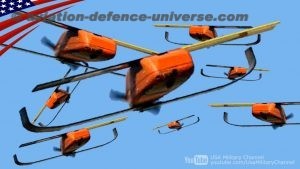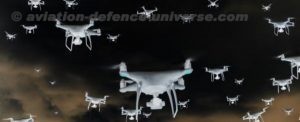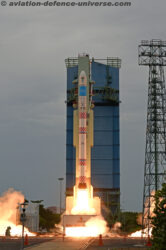
‘We knew this day was coming’
By Lt. Gen. VK Saxena(Retd.)
Toronto. 11 January 2018. Open sources are reporting since yesterday that the Russian air base at Khmeimim and Tartus naval facility in West Syria have been struck a week ago (on 05 Jan 18) by a SWARM of home-made drones. This is the first time that such a coordinated assault has been reported in military action[i] . Russia says, it has identified the launch location from where the SWARM of armed drones began their attack[ii].Details revealed indicate that ten drones rigged with explosive devices attacked the air base while three others attacked the naval base. Though the attackers are unknown but Russians blames Syrian rebels backed by Turkey for the terrorist attack
This is a milestone event since it is the first time that the drones in the form of SWARMS have launched a co-ordinated attack on a military base. It has been the opinion of the author that the ‘unmanned revolution’ is being ‘attended’ and ‘driven’ by some of the niche technologies, bringing to the battle field more and more technologically enabled machines.
Some of these include stealthy unmanned aerial systems (UAS), morphing UAS, nano UAS and more. Artificial intelligence is at play to accord a degree of near full autonomy to UAS , dwarfing its dependence on the Ground Control Station (GCS). The latest in the line is the teaming of the manned and unmanned in joint operations.
SWARM is also a manifestation of the above said enablement of the UAS throufg emerging technologies. This brief work tries to put the SWARM UAS in the perspective.
SWARM stands for Smart Warfighting Array of Reconfigurable Modules. It is another manifestation of nano-technology application in the UAS that is fast emerging. In this, many a small autonomous UAS are made to fly in a swarm without using the ground control station and delivering continuous co-ordinated information to enhance situational awareness. Individual vehicles in the swarm are so programmed as to communicate and co-ordinate actions of each other and one another to conduct autonomous searches. The data collected is aggregated and relayed back in real time.[iii] Small scale UASs functioning as SWARM, rely upon each other as migrating birds. They can collect data precisely, navigate through complex and difficult terrain and are continuously kept updated as to their surrounding, status and their inter-se position with respect to the swarm. This is achieved by using evolutionary algorithms.

As a result of the above networking algorithms, if out of a large swarm formation, a few UAS land due to malfunction or have other problems such as engine failure etc, the control system ensures that the other UAS become aware of this and form new formations that allows the rest of the swarm to collect the data which the malfunctioning UAS were supposed to be collecting. This allows the swarm to function as a ‘live mind’ of sorts, making decisions in the autonomous mode.
M/s Boeing is one of the several companies that is developing swarm based technology. The same is based heavily on the communication systems used by animal swarms. Suitable algorithms are being developed for performing variety of tasks such as searching a designated area, mapping it and generating waypoints and generating information which can be relayed to the network in near real time.
SWARMs-The Future of Intelligence Surveillance, Target Acquisition and Reconnaisance (ISTAR) Missions.

M/s Ecole Polytechnique Fedarale de Lausanine in Switzerland has developed a ‘Swarm Software’ (called SMAVNET) for use in disaster situations. SMAVNET or ‘Swarming Micro Air Vehicles Network’ (each weighing 420grams and having a 80 centimetre wing span) is being designed as a communication system relay in disaster situations to aid rescuers. The software uses a gyroscope along with pressure sensors to make decisions as to which flight path is better than the other. Their communication abilities mimic that of ‘ants’. Much like ants, which use pheromones to remember the path they take from their nest to food. The SWAMNET uses similar principle to allow the UASs to paint a path based on remembrance so that it can have a constant communication path to the home base for sending information back[iv]. The day is not far when we will see swarms of operationalised UAS, each small vehicle lifted and propelled by rotors (four rotors, making the vehicle a quad copter) and moving like a flock, much like the storks or wasps or ants. Each small vehicle will be tied to the other in the soft mode through yet evolving algorithms which will allow them to operate as a ‘team’. The future of ISTAR mission is here!
And now with the SWARM attack on the Russian Air Base on 05 Jan 18, the ‘unmanned revolution’ scales itself up by one more notch and counting.
(Lt. Gen.VK Saxena is a Delhi-based former Director General Army Air Defence. He is presently an Advisor to a leading Defence PSU . The views in the article are solely the author’s. He can be contacted at editor.adu@gmail.com).





































































































































